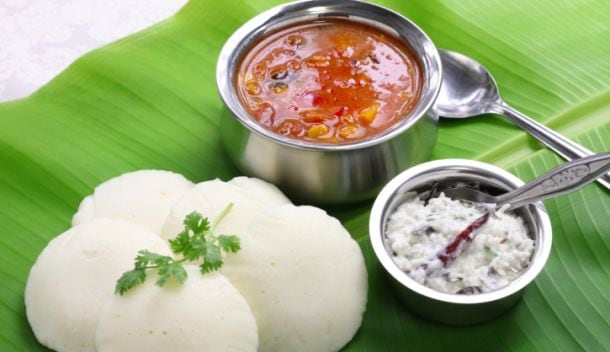Hard Idlis, No More! Avoid These Common Blunders To Make Them Perfectly
There’s something incredibly satisfying about biting into a soft and fluffy idli, isn’t it? The process of turning a silky-smooth batter into pillowy, round white balls is like an art form in itself. Sometimes you may also find yourself wondering how restaurants are able to achieve that perfectly soft texture that keeps us coming back to them. Is there a secret ingredient that they use? Is there some process that we’re missing out on? Well, the truth is that there are no secrets involved. You just need to be mindful of certain things, and you’ll gradually be able to achieve perfection. If you’re wondering what mistakes you’re making while making idlis, here are five common mitsakes that you should avoid at all costs:
Also Read: Have Leftover Idli? Give It A Yummy Makeover With 5 Snacks Recipes Under 30 Mins

Here Are 5 Mistakes To Avoid While Making Idlis:
1. Using the wrong type of rice
Rice is the key ingredient in making idlis. If you do not use the right type, your idlis won’t turn out soft and fluffy. There are several different varieties of rice in the market, but the one that is perfect for making idlis is parboiled rice, also known as ukda chawal. You can also use medium-grain rice if you’re unable to find parboiled rice. However, avoid using long-grain rice at all costs, as it won’t give you the desired results.
2. You’re soaking the ingredients incorrectly
To make idlis, dal and rice should first be soaked in water to soften. If you soak both of them together, then we suggest you stop doing so. It may seem convenient, but if you want perfectly soft idlis, you must soak them separately. This is because both rice and dal need different quantities of water to fluff up, and soaking them together may ruin the texture of your idlis.
3. Not allowing the batter to ferment
Another key step in making idlis is the fermentation process. For the idlis to be soft, you must allow the batter to sit for some time. While it’s usually recommended to leave it overnight for best results, leaving it for 2 to 3 hours also works well if you’re short on time. By doing so, the batter gets an ample amount of time to aerate, ensuring your idlis turn out super light.
Also Read: Watch: The Classic Rava Idlis Get A Spicy Twist With This Masala Rava Idli

4. Overmixing the batter
Once your idli batter is nicely fermented, you may be wondering, what could possibly go wrong now? Well, the answer lies in overmixing it. Just give it a nice stir to ensure everything is smooth and consistent. If you overmix the batter, you’ll end up ruining all the air that was incorporated into it during the fermentation process.
5. Overfilling the idli moulds
Another common mistake that we’re all guilty of making is overfilling the idli moulds. We end up filling them completely with the batter, which doesn’t allow the idlis to cook properly. The batter may also overflow and create a mess inside the steamer or pressure cooker. Fill the batter to 3/4th of the mould’s capacity. Also, do not forget to grease it with some oil before pouring it in.
Making idli batter at home may seem challenging at first and may take some trial and error. Avoid the above-mentioned mistakes to ensure that they turn out perfectly every single time.
For all the latest Health News Click Here
For the latest news and updates, follow us on Google News.
